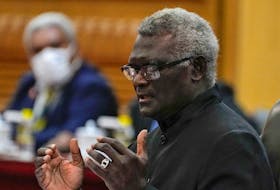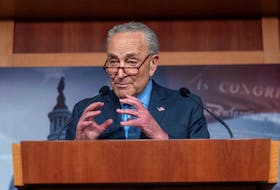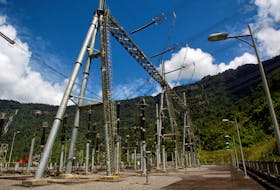(This July 8 story has been corrected to rectify order of Serra to Franciscan from Jesuit in paragraph 9)
By Andrew Hay
TAOS, N.M. (Reuters) - Some Hispanics and Native Americans in a New Mexico valley want to reinstate the statue of a Spanish colonial ruler that officials removed in June as anti-racism protests swept the nation.
Rio Arriba County authorities carried off the Juan de Oñate sculpture on June 15, fearing its destruction, as Native American activist group Red Nation planned a protest. It came down the same day a protester 60 miles (97 km) southwest in Albuquerque was shot by a man protecting another Oñate sculpture.
The death of unarmed black man George Floyd in police custody in Minneapolis in May sparked widespread racial justice protests. Demonstrators across the country have defaced or toppled dozens of statues of European colonizers, Confederate generals and figures who subjugated native peoples.
The Oñate statue was unveiled in 1994 in Alcalde, around 30 miles (48 kms) north of Santa Fe.
Red Nation organizer Elena Ortiz, of the nearby Ohkay Owingeh Native American community, declared its removal part of "the pueblo revolt of 2020," comparing it to the 1680 indigenous uprising that drove Spanish settlers from the area.
The statue had long outraged those who trace Oñate's brutal 1598 colonization of New Mexico to contemporary problems ranging from gender inequality to institutional racism.
But Ohkay Owingeh Governor Ron Lovato and Rio Arriba's Democratic state representative Joseph Sanchez, who is Hispanic, opposed removal in a joint statement. The two noted that their communities had lived in harmony for centuries.
“This group that’s pushing for this movement, they’ve created something that didn’t exist, creating tensions between some of the people," said Sanchez. "Onate did bad things, but he helped settle the Hispanics, that was a different time."
ELECTION-YEAR ISSUE
U.S. President Donald Trump has made memorials to the pro-slavery Civil War Confederacy an election issue. Other statues that have fallen include monuments to Spanish Franciscan Junipero Serra who founded missions in California; and explorer Christopher Columbus, long credited with discovering America but also accused of engendering genocide against Native Americans.
Oñate statues popped up along the Rio Grande in the 1990s as communities celebrated the 400th anniversary of his arrival. At the time, folklorist Enrique Lamadrid advised Albuquerque on the celebrations and urged organizers to steer clear of Oñate. He recalled that many cities chose the statue of the "wrong guy."
"We shook our heads in dismay and said 'this is going to explode at some point.'" said Lamadrid, noting that the frontiersman soldier was convicted and exiled in his own time for executing his men and a massacre at Acoma Pueblo.
TEACHING HISTORY
It is now up to Rio Arriba's county commission and residents to decide the future of the Alcalde statue. Española personal trainer April Marie Moya-Salazar started an online petition to reinstate the sculpture and has over 600 signatures.
“Most of the younger generation has no idea what is going on, they think we’re celebrating genocide," said Moya-Salazar, 41, who traces her Spanish ancestry back 14 generations.
Roberto Valdez, an Española college history lecturer, went to the Alcalde site on June 15 to try to explain Oñate's significance to a young protester dancing on the empty plinth.
"The statues arose because we were keenly aware of the erosion of our culture and heritage," said Valdez, who is Hispanic.
For Hispanic community advocate Fred Sandoval, the Oñate sculpture needs to go in a new museum for "reconciliation."
"We have to tell the entire story from different perspectives, the good, the bad and the ugly," said Sandoval, director of a Latino behavioral health group.
Ohkay Owingeh's Lovato said the valley should be focused on its opioid crisis and the coronavirus pandemic rather than taking down monuments.
"I’m more concerned with, call them the Oñates of today, the enemies of today, than bronze statues that can't hurt me anymore," said Lovato.
But he said the Oñate statue could go back up with one of Popé, the Ohkay Owingeh religious leader who started the 1680 Pueblo Revolt, to represent both Hispanics and Native Americans.
(Reporting by Andrew Hay in Taos, New Mexico; Editing by Bill Tarrant and David Gregorio)







